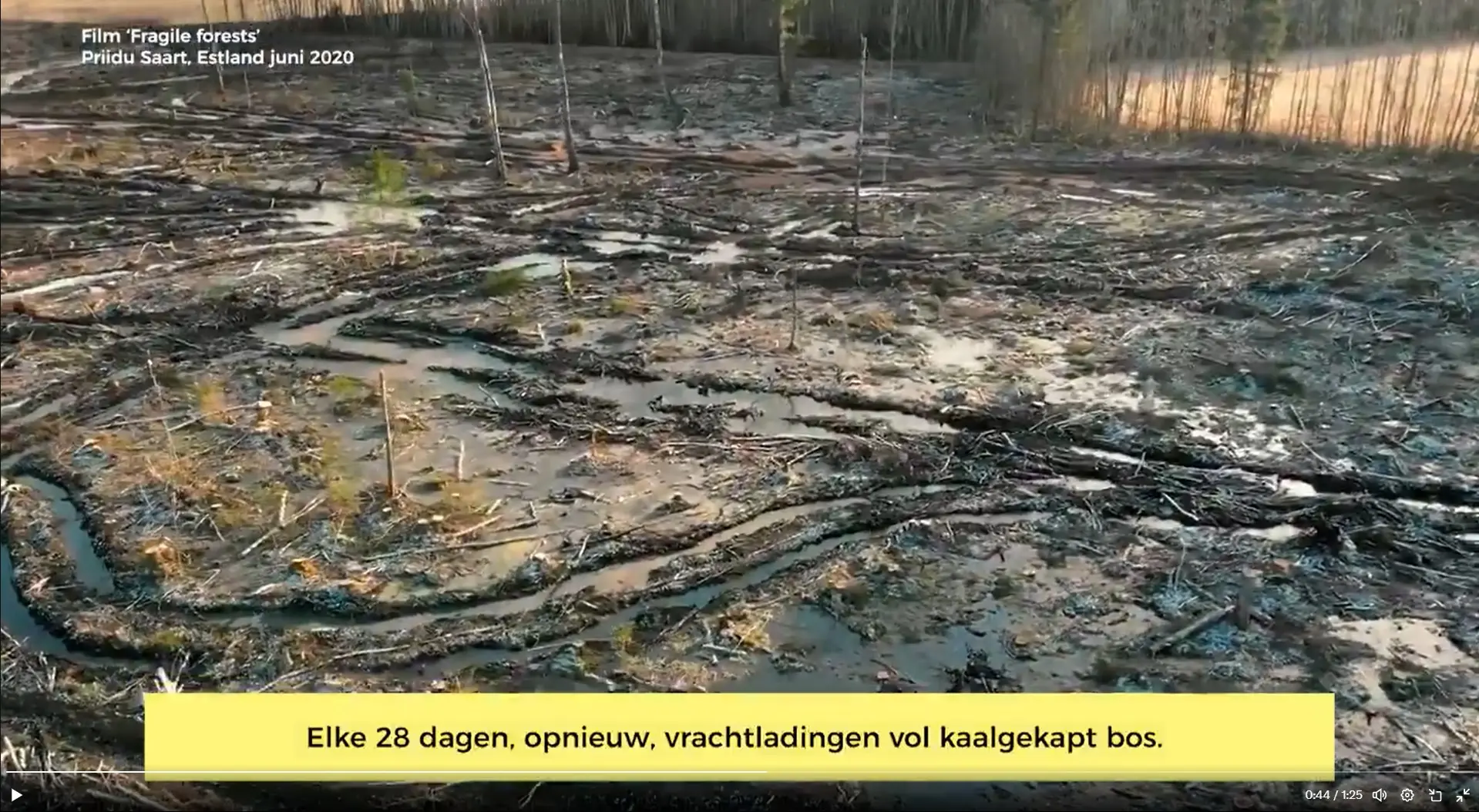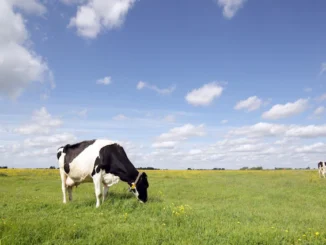
Burning woody biomass to generate renewable energy is controversial. Wood pellets are supposed to be CO2-neutral fuel because growing trees absorb the greenhouse gas that was released in the burning. But the Clean Air Committee (Comité Schone Lucht) says harvesting wood pellets leads to major damage to nature and biodiversity. How sustainable is biomass burning really? Patricia Osseweijer, Professor of Biotechnology and Society at TU Delft, and Dr Fenna Swart, Director of the Clean Air Committee, give their views.
Local or global
While Swart is an outspoken opponent of biomass burning, Patricia Osseweijer and her group are working to design small-scale biomass use, aiming towards sustainable development for local communities. In her research, she focuses mainly on biomass waste streams from agricultute or forestry. These are converted in bio fuels, providing local communities with an extra income.
A bulk carrier delivers 30,000 shredded trees every third day
The biomass debate raging in the EU has a different background: large scale import. For example, a bulk carrier arrives in the Rotterdam harbour to deliver 30,000 shredded trees from the USA and the Baltic States every third day. This biomass, subsidized by the Government, is burned in power plants supposedly to provide renewable energy.
Non governmental organisations (NGOs) such as the Estonian Fund for Nature and the American Dogwood Alliance, have rung the alarm. They report how huge machines harvest the biodiverse forests of Estonia and the southeastern United States, shredding everything in their path. In an effort to rule out biomass burning as a renewable energy source, on the initiative of the Clean Air Committee, over 25 international nature and forest protection organisations sent a letter to Wopke Hoekstra, Euro Commissioner for Climate.

Large-scale biomass burning accounts for over 40% (source: CBS) of the renewable energy in the Netherlands. Fenna Swart, Director of the Clean Air Committee (Comité Schone Lucht), reports that 50,000 hectares of forest is burned in incinerators in the Netherlands every year. “That will only increase now that Wopke Hoekstra has negotiated a tripling of the share of renewable energy at COP 28 climate conference in Dubai.” In doing so, he disregarded the call initiated by Swart’s organisation, stating that this was “not a topic for discussion”.
Swart can only explain this by the ‘well-organised lobby’ behind biomass. “It’s all about power and money, and meanwhile an unparalleled ecological scandal is taking place where nature and biodiversity are direct victims,” she argues.
Residual streams
According to Patricia Osseweijer, things are not that bad. She does not share the concerns about biomass burning. “In any case, it is good that the share of renewable energy is tripled: every drop or gram of fossil energy we can avoid is a win for the climate,” she says. “Biomass combustion is now covered under the current regulations of renewable alternatives, which allows the CO2 stored by trees and other crops to be harvested.” Of the current woody biomass burnt, 63% comes from the USA. “This consists of 96% residual streams from forestry and agriculture,” Osseweijer continues. “That percentage has grown considerably in recent years; it was 60% in 2020.”
Protected forest
This may sound good, but according to Swart the reality is very different. As early as 1997, the IPCC (Intergovernmental Panel on Climate Change) stated that biomass burning may be effective in reducing CO2 emissions as long as there is sufficient replanting. But, the IPCC stated that this is not working in practice and it is hard to verify. Industrial-scale forest burning was nevertheless formalized because negotiators at the time still thought biomass burning would be at a small enough scale to achieve forest regrowth. Burning biomass was never intended to ship millions of tons of wood thousands of miles to be burned in another country.

Central to the discussion is the question of whether the current certificates that categorise biomass as sustainable are adequate. During the Kyoto negotiations in 1997, the EU argued that the certification system used was effective in ensuring the sustainability of biomass, and that wood pellets do not come from protected forests. Osseweijer agrees. According to available reports, power plants mostly use ‘residual wood’ pressed into pellets. Approved EU certification systems guarantee that the forestry is sustainable, in part on the basis of monitoring the mandatory reporting from the companies.
“In principle, wood from the USA meets these sustainability criteria,” Osseweijer says. “Systematic forest and clear-cutting is not profitable in the long run and is certainly not driven by the increasing demand for biomass for energy generation. After all, wood for building materials yields many times more.”
Conflict of interest
However, according to Swart, practice proves otherwise. “The wood that now fuels European biomass plants often comes from protected, natural forests in North Carolina,” she states. “Replanting is not mandatory in the USA, and compliance with any certification also appears to be ineffective, say several American NGOs, including the Dogwood Alliance.”
A certificate for imported biomass was developed in the Netherlands ten years ago and is now known as the European Sustainable Biomass Program (SBP) certificate. It is awarded through CertiQ. This is a subsidiary (in Dutch) of grid operator TenneT, a key player in the energy transition.
This means that biomass certification is controlled directly by the stakeholders, who sometimes lack a critical stance. In 2017, RWE (Essent) and electricity company Uniper received subsidies of EUR 2.67 billion and EUR 630 million respectively from the Dutch Ministry of Economic Affairs to produce ‘green’ electricity from sustainably sourced biomass.
Disturbing conclusions
Because of the criticism of the SBP certificate, the British Biofuelwatch and the Clean Air Committee held up this label to critical scrutiny. This revealed that SPB allows wood extraction even when – as is the case in Estonia, Latvia and the southeastern USA – intensive logging has led to a decrease in CO2 uptake and storage, as well as forest biodiversity. In addition, the inspection of the sustainability criteria imposed by SBP is in the hands of the wood pellet producers themselves.
The American Enviva company, the world’s largest wood producer, also has the European SBP certificate and claims to be a leader in sustainable bioenergy from wood. It harvests forests in the southeastern USA and processes them into wood pellets at as many as 10 plants. In accordance with regulations, the company visited 150 of its forests in 2019 and even more of them in 2018. The auditors confirmed that all sites met the criteria.
Fraudulent
The consequences of the lack of proper monitoring of the origin of wood pellets turns out to be disastrous for forests and biodiversity. In 2022, a whistleblower told the BBC and Mongabay, an American science portal on conservation, that Envia’s green claims were fraudulent and that whole trees, regardless of their origin, were being shredded and pressed into pellets.
Heather Hillaker, attorney for the Southern Environmental Law Center, a non-profit environmental organisation, confirmed the accusation that “Enviva’s wood pellet mills have caused great harm to small Southern communities”.
According to Dogwood Alliance and the Clean Air Committee, the United States has lost more than one million hectares of biodiverse forest as a result. This is on top of the 15 million hectares of natural forest that the organisations say has already disappeared over the past 60 years. During this period, 17 million hectares of industrial pine forests were added. “While the forests grew in quantity, which is systematically promoted by governments and energy companies, the natural value decreased dramatically,” Swart says.
While the use of biomass derived from waste streams can often be considered as sustainable, as Ossseweijer’s research shows, the current practices of large-scale biomass combustion in the EU usually are not. Osseweijer says that “Practices like those exposed by Dogwood Alliance and Clean Air Committee are bad for local people and ultimately bad for the planet. It’s important that these organisations are alert to these kinds of practices.”



